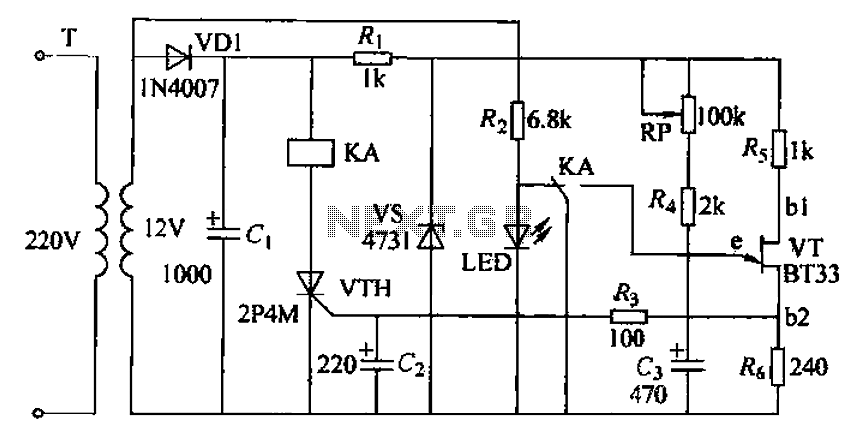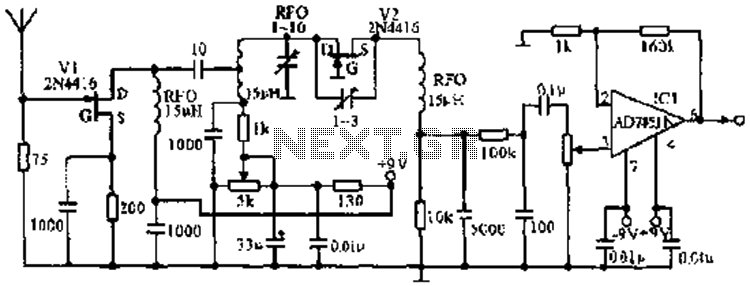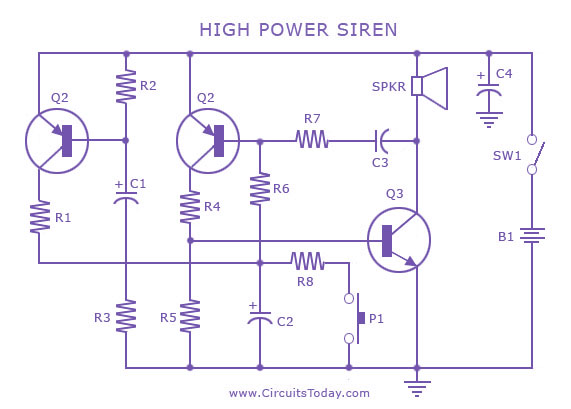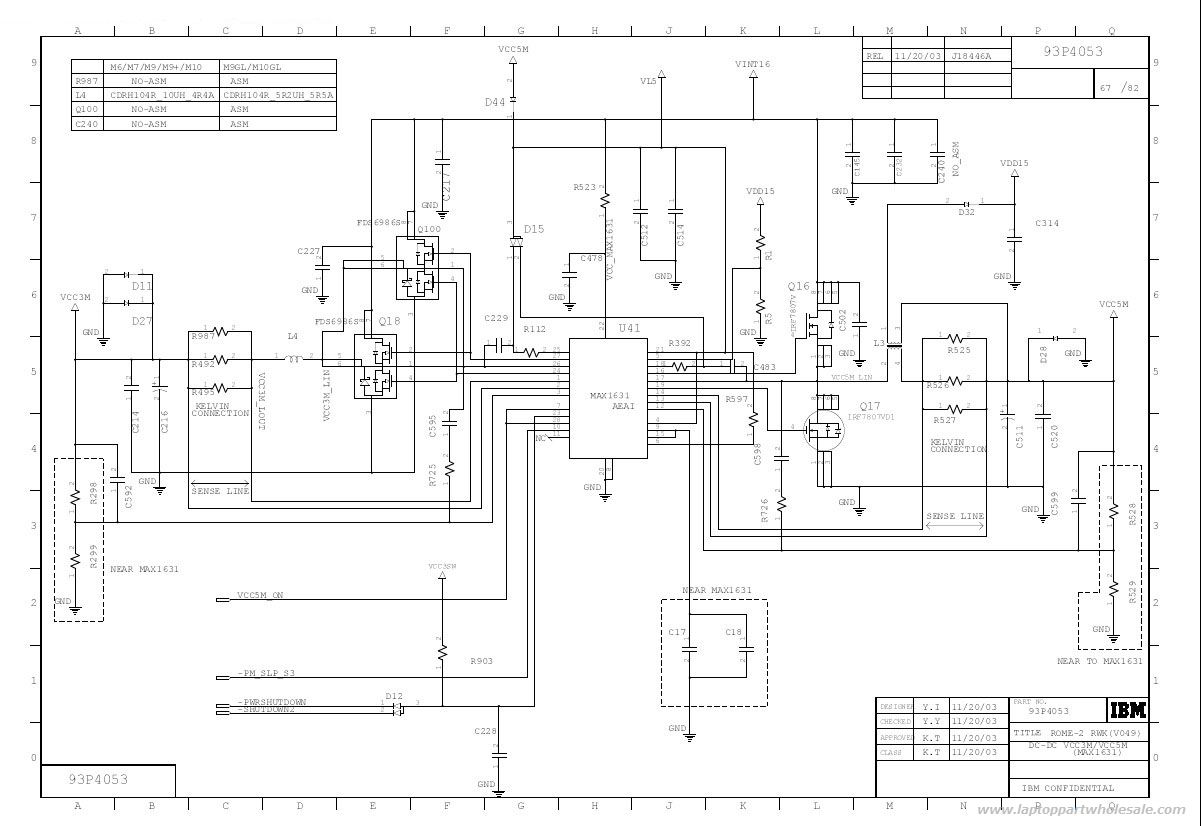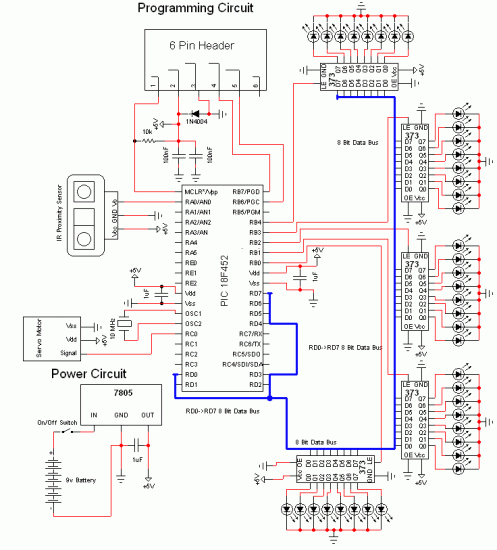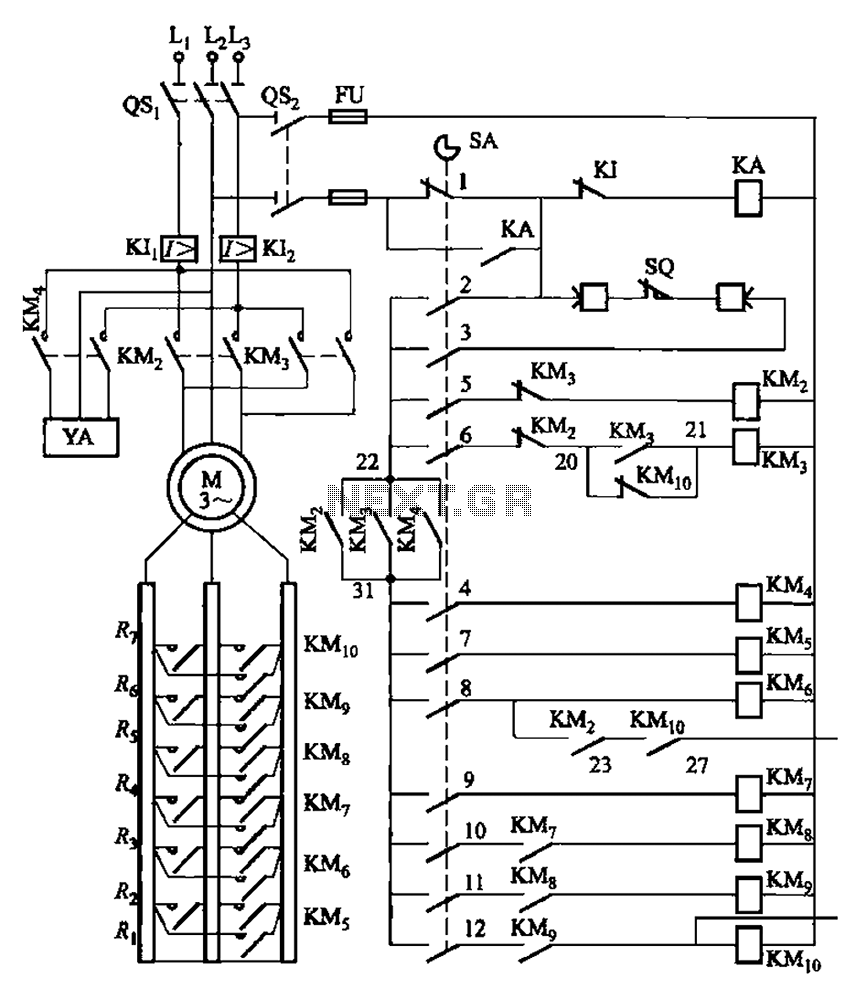
Electronic toss circuit
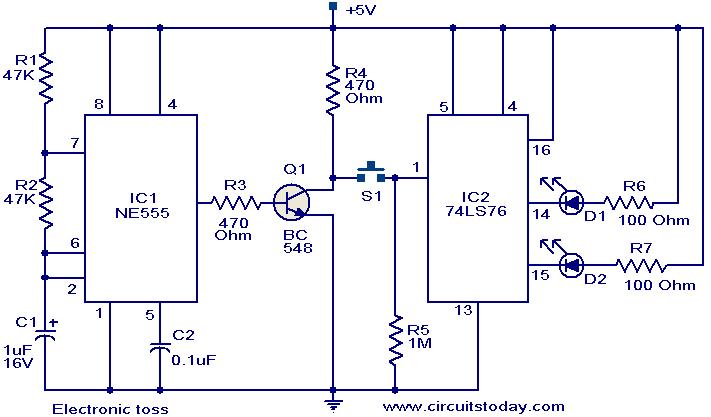
The circuit described can be utilized for tossing a coin, serving as a random generator for head or tail outcomes. This circuit is applicable in various games where a coin toss is required to initiate play. It employs two integrated circuits: the NE555 timer (IC1) and the 74LS76 dual JK flip-flop (IC2). IC1 is configured as an astable multivibrator operating at a frequency of 10 Hz. The output from IC1 is inverted using the transistor Q1. The collector of Q1 connects to pin 1 of IC2 through a push-button switch S1. IC2 is set up in toggle mode, causing the output pins 14 and 15 to alternate states when switch S1 is pressed. The LEDs connected to these pins also toggle, and due to the 10 Hz frequency, both LEDs appear to glow simultaneously. Upon releasing switch S1, one of the LEDs remains illuminated, indicating either heads or tails.
The circuit operates by generating a continuous square wave signal from the NE555 timer, which serves as the clock input for the JK flip-flop. The NE555 timer is configured in an astable mode, producing a pulse every 100 milliseconds, resulting in a toggling frequency of 10 Hz. This frequency is suitable for visual indication through LEDs, making it easy for users to perceive the outcome of the toss.
The transistor Q1 plays a crucial role in inverting the output signal from the NE555 timer. It ensures that the toggling action is appropriately transferred to the JK flip-flop. When the push-button switch S1 is activated, it allows the clock pulses from the NE555 timer to reach the JK flip-flop, which is configured to toggle its outputs on each clock pulse.
The 74LS76 dual JK flip-flop is set up such that its outputs (pins 14 and 15) represent the two possible outcomes of the toss. When the button is pressed, the outputs change states, causing the connected LEDs to light up. The persistence of vision effect creates the illusion that both LEDs are glowing at the same time. Once the button is released, the flip-flop maintains the last state, with one LED remaining lit, indicating the result of the toss.
This circuit can be further enhanced by incorporating features such as sound output or additional visual indicators to improve user interaction. The basic design, however, effectively demonstrates the principles of digital electronics and provides a simple yet functional solution for simulating a coin toss.The circuit given here can be used for tossing head or tail. There are many games in which a tossing is required to start and this circuit can be used in all such instances. The circuit uses two ICs NE 555 timer (IC1) and 74LS76 dual JK flip flop (IC2). The IC 1 is wired as an astable multi vibrator operating at 10Hz. The output of IC1 is inverted b y using the transistor Q1. The collector of Q1 is connected to the pin 1 of IC2 via the push button switch S1. The IC2 is wired in toggle mode. When push button S1 is pressed the output pins 14 and 15 of IC2 starts toggling in state. The LEDs connected to these pins also toggles (Since the frequency of toggling is 10Hz, we feel both LEDs glowing). When push button S1 is released either one of the LED remains ON indicating the head or tail. 🔗 External reference
The circuit operates by generating a continuous square wave signal from the NE555 timer, which serves as the clock input for the JK flip-flop. The NE555 timer is configured in an astable mode, producing a pulse every 100 milliseconds, resulting in a toggling frequency of 10 Hz. This frequency is suitable for visual indication through LEDs, making it easy for users to perceive the outcome of the toss.
The transistor Q1 plays a crucial role in inverting the output signal from the NE555 timer. It ensures that the toggling action is appropriately transferred to the JK flip-flop. When the push-button switch S1 is activated, it allows the clock pulses from the NE555 timer to reach the JK flip-flop, which is configured to toggle its outputs on each clock pulse.
The 74LS76 dual JK flip-flop is set up such that its outputs (pins 14 and 15) represent the two possible outcomes of the toss. When the button is pressed, the outputs change states, causing the connected LEDs to light up. The persistence of vision effect creates the illusion that both LEDs are glowing at the same time. Once the button is released, the flip-flop maintains the last state, with one LED remaining lit, indicating the result of the toss.
This circuit can be further enhanced by incorporating features such as sound output or additional visual indicators to improve user interaction. The basic design, however, effectively demonstrates the principles of digital electronics and provides a simple yet functional solution for simulating a coin toss.The circuit given here can be used for tossing head or tail. There are many games in which a tossing is required to start and this circuit can be used in all such instances. The circuit uses two ICs NE 555 timer (IC1) and 74LS76 dual JK flip flop (IC2). The IC 1 is wired as an astable multi vibrator operating at 10Hz. The output of IC1 is inverted b y using the transistor Q1. The collector of Q1 is connected to the pin 1 of IC2 via the push button switch S1. The IC2 is wired in toggle mode. When push button S1 is pressed the output pins 14 and 15 of IC2 starts toggling in state. The LEDs connected to these pins also toggles (Since the frequency of toggling is 10Hz, we feel both LEDs glowing). When push button S1 is released either one of the LED remains ON indicating the head or tail. 🔗 External reference
